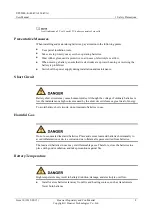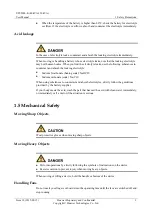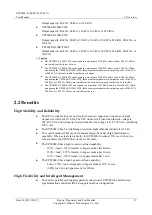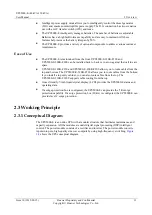
UPS5000-E-(40 kVA-320 kVA)
User Manual
1 Safety Precautions
Issue 10 (2015-09-15)
Huawei Proprietary and Confidential
Copyright © Huawei Technologies Co., Ltd.
7
1.4 Battery
This section describes precautions for operating batteries.
Before operating batteries, carefully read the safety precautions for battery handling and
connection.
To ensure battery security and efficient battery management, use the batteries delivered
with the UPS. Huawei shall not be responsible for battery damage caused by using
non-Huawei batteries for Huawei UPSs.
Handle lead-acid batteries according to local regulations.
Incorrect handling of batteries causes hazards. When operating batteries, avoid battery
short circuits and electrolyte overflow or leakage.
Electrolyte overflow may damage the device. It will corrode metal parts and circuit
boards, and ultimately damage the device and cause short circuits of circuit boards.
Short circuits caused by incorrect operations may cause serious injuries due to high
power of batteries.
Do not reversely connect positive and negative battery terminals.
Use batteries of the specified type. Otherwise, the batteries may be damaged.
Check battery connections periodically to ensure that all screws are securely tightened.
Install or store batteries in clean, cool, and dry environments.
Do not decompose, transform, or damage batteries. Otherwise, battery short circuits, acid
leaks, and even human injuries may result.
Technical Specifications
Table 1-1
Battery specifications
Battery Type
Minimum/Ma
ximum
Number of
Batteries
Cell Float
Voltage
Cell
Equalized
Voltage
Cell
Minimum
Voltage
Sealing
lead-acid
battery
Thirty to
forty-six 12 V
batteries
2.23–2.27
V/cell
2.3–2.4 V/cell
1.6–1.9 V/cell
Open lead-acid
battery
Thirty to
forty-six 12 V
batteries
2.23–2.27
V/cell
2.3–2.4 V/cell
1.6–1.9 V/cell
















































